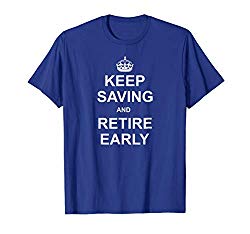Where You Work Matters, Choose Carefully
Jobs and opportunity are often a major factor that prompt people to move to another city or part of the country. After all, unless you have a big inheritance or have won the lottery, work is an essential prerequisite to get to financial independence.
I’ve previously posted two handy tools that can help in a job search and that use location as a factor. One is the Where Work Pays mapping tool from the Hamilton Project which serves up location-specific salary data for 320 different occupations across the country.
The other tool is the Georgetown University mapping tool that allows you to compare expected salaries from different college majors, including across different states. Both of these tools are helpful and full of great data, but when it comes to location they only aggregate by state or city at best. They do not have the data to drill down at a more granular level, like county or zip code.
Well I’ve found the tool that allows you to do that and more.
This ArcGIS Mapping tool from ESRI, the leading company in Geographic Information Systems (GIS) software, is chock full of data to help you narrow down a job search.
The interface isn’t as easy to use as many online mapping tools because the software behind the scenes is professional level GIS software. But that’s why I’m here – to guide you through it. Once you learn how to use this tool you’ll want to bookmark it for sure, especially if you’re considering a new job or relocating in the future.
When you first load the tool you won’t see much, just a map of America and two words in the table of contents on the left side – “Accessibility” and “Topographic”.
Click the little black triangle just to the left of the word “Accessibility” and the cool data layers will appear.
First let’s look at the data layers contained in the tool. I’m going to highlight the ones that I think will be most useful first:
Jobs within a 45-minute drive, weighted – This map indicates the relative accessibility to jobs from residences via automobile (in terms of street network travel time) for each census block group, compared to other block groups in the same metropolitan region. Jobs in nearby block groups (based on travel time) are weighted more heavily than those further away.
This is a super valuable data layer, especially for you financial independence seekers who know how important it is to live close to your job. Car costs are outrageous and driving is dangerous, stressful, and polluting. And if you can get away without owning a car at all your path to FI will be even faster and healthier.
Here’s what this data looks like in Washington D.C., near where I live.
Make sure the “Accessibility” master layer is checked on first. Then when you first check the box to turn the nested layer on you’ll notice the new data covers the mapping data. Click on the three little blue dots to the right of the layer title (shown above in my graphic) and choose “transparency”, then you can slide the transparency to something that allows you to see the map and the data. Or you could just flicker the layer on and off.
Another of the great layers is:
Percent of workers with less than 30 minutes travel time to work – This map estimates the percent of workers within each block group with less than 30 minutes travel time to work.
This data can help you find specific neighborhoods and even streets where people tend to have shorter commutes, which says a lot about traffic, accessibility to public transit, and nearby jobs.
They also have a great data layer that compares the number of jobs to the number of workers:
Workers per Job Equilibrium Index – This map illustrates an index that measures the balance between workers and jobs within each census block group. An index value close to one indicates a balance between resident workers and jobs.
There are many other great data layers in this tool related to public transit and commute times. Here’s a list:
- Pedestrian-oriented street intersection density
- Transit service per hour during evening peak
- Working age population within a 45-minute drive, weighted
- Percent of workers who drive to work alone
- Percent of workers who carpool to work
- Percent of workers who commute to work by public transportation
- Percent of workers who bike or walk to work (this is me!)
- Percent of workers who work from home (this is increasingly me!)
- Percent of workers with 30 – 60 minutes travel time to work
- Percent of workers with 60 – 90 minutes travel time to work (ugh, must be hell)
- Percent of workers with greater than 90 minutes travel time to work (I can’t fathom this life…)
Public Transit
Lastly I want to highlight another tool from the ESRI folks. If you’re seeking financial independence you know how expensive car ownership is. So if you can find a job that has great public transit accessibility you can drive way less or perhaps ditch your car all together. Then your FI journey will go on steroids.
The ESRI folks have a map to find that too. The mapping tool at the link looks identical to the other but only has one main data layer. You have to click the little black triangle just to the left of the word “SLD Trans30” on the left (note: they did a crappy job of naming their data something that makes sense!)
Jobs within a 30-minute transit ride – Total number of jobs that can be reached within a 30-minute public transit ride starting at the block group centroid.
Don’t be confused by the geek-speak – “block group centroid” simply means the center of each Census block square. Looking at Washington D.C. again it’s clear we have lots of jobs that meet this criteria.
We have one of the better subway systems in America, in addition to tons of buses and traditional rail.
Compare D.C. to a famously car-dependent city that has notoriously bad or non-existent public transit like Atlanta:
If you want to move to Atlanta to pursue your FI journey you will likely need a car and won’t be able to do anything without it.
Geoarbitrage
Geoarbitrage is a viable and popular strategy for those seeking financial independence. These awesome mapping tools can help you find very specific locations that meet your needs in a job search. Whether it be to have a short car commute or to use public transportation and go car-free, these maps and data can help you find it.
I’ve done lots of other geographic-based posts showing various aspects of money and finance from a location perspective. Be sure to check out my Geoarbitrage Resources Page that has tons of great tools to help you find your perfect location.
I hope you find these resources handy and I will continue to expose valuable tools that can help when deciding on a geoarbitrage strategy.













































Pretty cool tool. If you have the ability to choose your location for work it makes sense to try and get the best bang for your buck with geoarbitrage. I figure I shaved off 5 or more years of my path to FI because I got lucky with where I ended up working/living.
You did this right, low cost area, high salary, short commute
my biggest thing in location has been “move to a location you enjoy.” there’s no app for it but those are the times i’ve lived my best life. there are some places i wouldn’t live for a million bucks a year due to cultural fit or other factors. i think that’s why lots of people get “stuck” in lower wage situation because they’re unwilling to go to where the jobs are available and pay well for their skill. everything is a trade.
DC is wrought with people who came for the job and high salary, but many say they just don’t like it. Traffic is usually a culprit
When I graduated from college, I moved to Portland to work for Intel. This decision made a huge difference in my life. Life would have turned out a lot differently if I moved to San Jose, CA. The professional environments are so different. Who knows, how life would turn out. It’s interesting how these kind of decision make such a big difference.
Keep Portland weird!!
For me, having a short commute is so important, especially with young kids at home. I can spend more time with them by shaving time off my commute. It also makes it easier to attend school activities given the short commute time to school as well.
Where I work is extremely important. I would not look for a job which would increase my current commute time significantly.
Absolutely, I’m working on a post that tells my history of commutes. It depressed me to bring back the memories
I have *such* an aversion to commuting. When we lived in South Carolina, I likely could have gotten a much better job in Charleston, but the hour and a half drive each way was a non starter for me. Interesting how many people I know in this area with those kinds of drives… but worse because they don’t actually live that many miles away. Traffic is just that bad.
I hate commuting too after 3 years of hell early in my career. Post is in the works 😉 I work with quite a few people who have an hour and a half or even longer. Absolute insanity.
I’m only 2 miles from my job of 12hr shifts. It was nice while raising our boys cause I could zip home on a quick break if needed. Some of my coworkers endure far longer commutes of 1-2hrs round trip. Add that onto a 12 hr shift and you have little time left over for family or self. You only get so much time, spending it in a car is not my idea of fun unless I’m going on vacation.
You’re absolutely right Linda, when you have a long commute like that there’s no time left for anything else in life. Health suffers, diet suffers, relationships suffer.
Thanks for posting the tool! I’ve always tried to stay under 30 minutes one way. It’s so important to your well-being. I’m living in the Bay Area where houses are super expensive. For most people anything affordable nowadays sadly requires having a very long commute (1 hour and up).
Under 30 is good, I now would not tolerate over 20. But would always choose to bike first and if that takes an hour well then it’s an hour of exercise and enjoyment )
Good stuff Dave! For most of my working life I commuted in less than half an hour. A lot of times that was on a bus too. I saved a ton of money doing it too.
Then life changed one day… and I had a 1 hour to 1.5 hour commute each way every day. Life became hell (pretty much).
These days I don’t commute at all (I just walk my kid to school), but I kinda have the feeling that I paid my dues, you know? 😉
These are great tools for drawing a boundary around where you want to search. It’s also a great reminder to be proactive about searching for jobs that fit your priorities, rather than looking at what jobs are out and force-fitting your priorities around what happens to be available. It’s always more rewarding if you decide what you want and then do the research and networking to apply to just those jobs.
You hit it on the head, you have to be proactive. Especially to avoid a life-sucking commute
I have worked abroad all over the world – from Australia, to South East Asia, to the middle east. Honestly, after all that I am pretty glad to be back in Australia
You Aussie’s are a proud bunch, and fun too. I had a blast there, thanks for commenting!